‘This isn’t my story to tell’: Alice Kettle on using textiles to respond to the migrant crisis
November 5, 2018
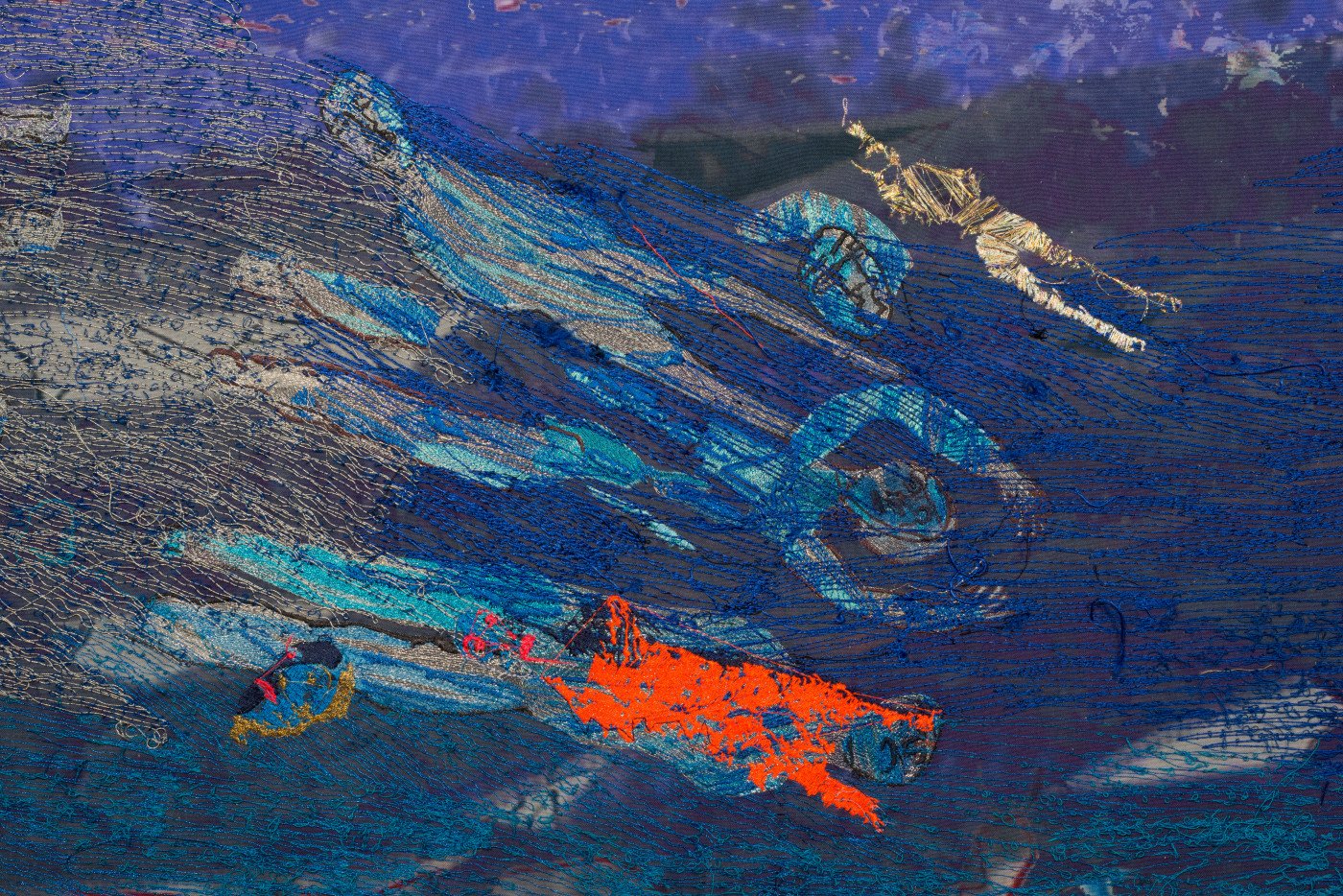
Alice Kettle, Sea- Thread Bearing Witness (detail), 2017, Courtesy the artist and Candida Stevens Gallery Photo: Joe Low.
Throughout history art has acted as a mirror reflecting back the issues which affect us, allowing us to examine them more closely than when these events are just words on a newspaper page. Alice Kettle provides such a mirror with her Thread Bearing Witness exhibition at the Whitworth Art Gallery. The topic of immigration has been at the forefront of media coverage in recent years, but what is often left untouched is the personal stories of those involved. Kettle has given a voice to these stories by incorporating the work of refugees and asylum seekers with her own.
Kettle, who is a contemporary textile artist and a professor at the Manchester School of Art, became personally aware of the struggles migrants and refugees face through her daughter, Tamsin Koumis, who has worked with them over the years. “She spent some months in the Dunkirk camp where she and a friend set up an organisation called Dunkirk Legal Support Team in 2016, which supported refugees in providing access to rights, information and advocacy on their behalf,” Kettle tells me. “As a consequence I was profoundly affected by her experience… Our government wants a hostile environment for refugees. I simply cannot sit back and not do anything about this human tragedy.”
Thread Bearing Witness is more than just a collection of artworks; it is a collaborative project which has brought together different voices as two of the canvases feature contributions made by refugees. “Our [mine and my daughter’s] feeling was that this is not my story, that I can bear witness by opening a space for the voices of lived experience to enter.” For Kettle, it was important for the work to be authentic and not to alter the stories of those involved, “I become the pattern maker, the narrator, the maker of the cloth, the ground which receives the gifts of those who wish to tell their story. I did not want to appropriate, or misrepresent a story that belonged to others, but offer a place for it to be told by first-hand experience.”
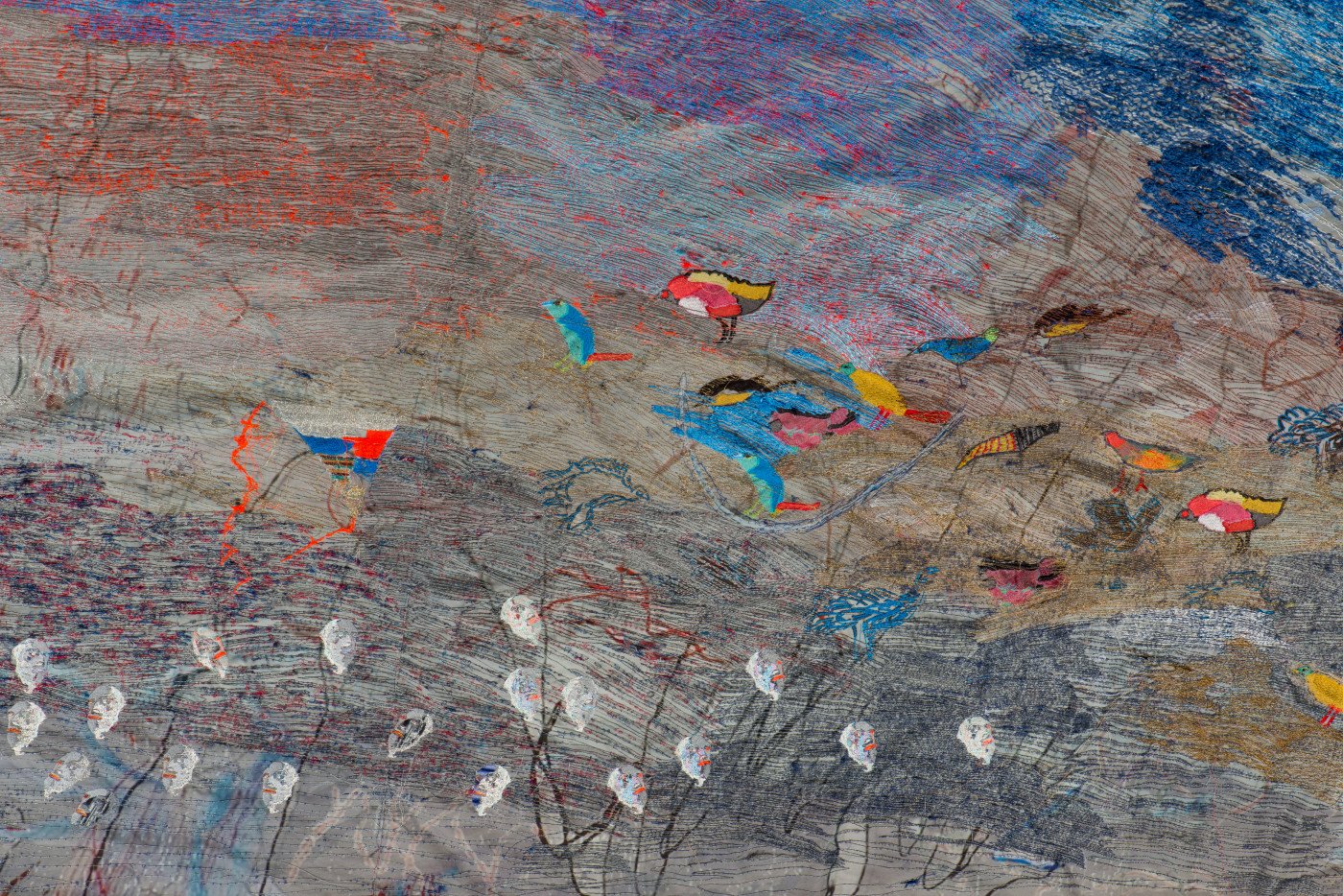
Alice Kettle, Sky- Thread Bearing Witness (detail), 2018, Courtesy the artist and Candida Stevens Gallery Photo: Joe Low.
Three huge canvases dominate the exhibition, entitled ‘Ground’, ‘Sea’ and ‘Sky’ respectively. They are united by their similar styles, with vast areas of different shades of colours and heavy machine stitching, yet each has their own feel. In ‘Sea’ human forms float in an ocean of thread, with arrows along the top and bottom of the canvas conveying a sense of urgency and direction, as if to move against tide would tie you up in these threads. The piece features layers, both of colour on the canvas and of stitching; sometimes it is compact and dense like embroidery, elsewhere it is looser as if stitched at an incredible pace. Metallic threads catch in the light, bringing a lifelike quality to the piece. ‘Sea’ portrays this journey that refugees have to go on, this sense of putting yourself into a position where you are floating between countries. The scale of the piece reflects the immensity of the situation: “It is also hard to ignore the enormity of people displacement and movement,” Kettle says. Throughout faces haunt the canvas, looking up at a sky we cannot see.
While ‘Sea’ is heavy and deep, ‘Sky’ is much lighter with a paler palette. The faces and the arrows continue here, but they are in a more subtle and muted thread and the arrows are thinner and fewer as they arch expansively across the scene. Gold and silver threads are present too, interacting with the light in the room. Different types of birds fill the canvas, providing pockets of colour against the light blue background. It is impressive how these large works can be visually explored by each detail, or as a whole. Working on such a big scale was a challenge for Kettle: “The stitching takes hundreds of hours. The size meant they were hard to manhandle, [they were] worked from the back and in sections. I never saw the whole works until they were hung.”
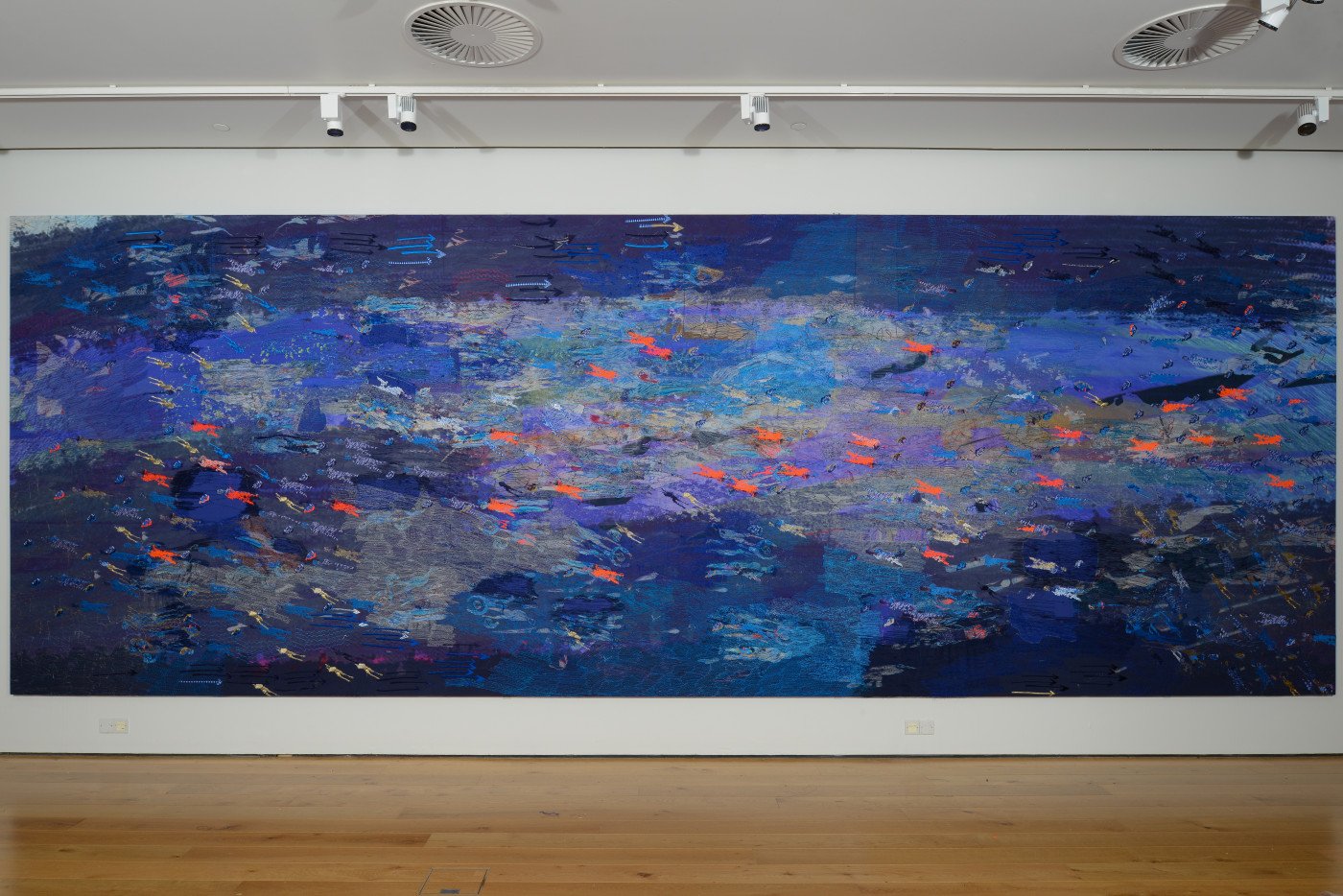
Alice Kettle, Sea- Thread Bearing Witness (detail), 2017, Courtesy the artist and Candida Stevens Gallery Photo:Joe Low.
‘Ground’ stands apart from ‘Sea’ and ‘Sky’ with its warm, earthy tones. Here the faces and arrows are found alongside little houses. In some areas green shrubs stand out against the brown and orange canvas. Throughout, the word freedom is embroidered, perhaps suggesting the security and freedom that the final stage of a refugee’s journey gives them. ‘Ground’ and ‘Sky’ both include contributions made by others, so there are different styles contained within the work, yet these add to the meaning of the work. “I had to make something rich and beautiful to represent the value of human life”, Kettle tells me. “This content could not be predicted, since it was formed through the variety of images that were gifted. I was surprised by the optimistic nature of these, mainly they were images of flowers and hearts which I read as a forward looking, seeking of a world where we could live rather than one that represented directly the horror of past experiences.”
The medium itself is an enabler in the conversation about migrants and refugees, as Kettle explains, “Stitching acts as common language. It is ubiquitous but also culturally specific. It can act as a carrier or a code or a way of making meaning. It bridges the domestic and the artistic and carrying this utilitarian aspect is important.” Stitching is accessible to all of us. It combines the worlds of art and craft, allowing it to communicate a certain message, which is what it does in the exhibition. “Anyone can do it, there is a familiarity of iconography and it binds us culturally, historically and socially together. It is a medium that absorbs through its material but also is rich and beautiful and layered. It operates as a metaphor for making good and the quality of human life.”
Alice Kettle: Thread Bearing Witness is on at the Whitworth Art Gallery, Manchester until the 24th February 2019. Any profits from the sale of Alice Kettle’s work on Thread Bearing Witness will be donated to charities supporting displaced people
Filed under: Art & Photography
Tagged with: Alice Kettle, Dunkirk Legal Support Team, The Whitworth, Thread Bearing Witness, Whitworth Art Gallery
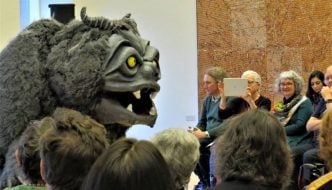
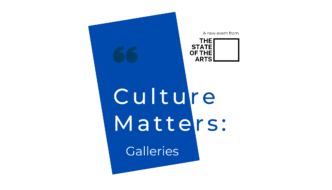
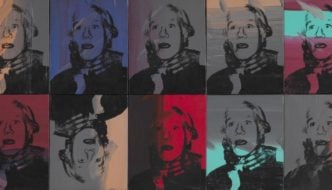
Comments